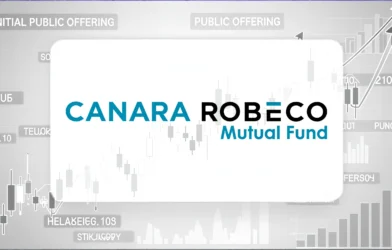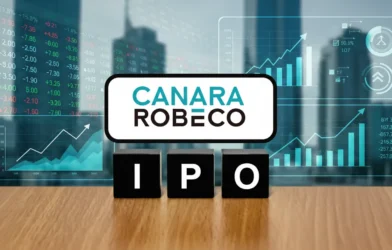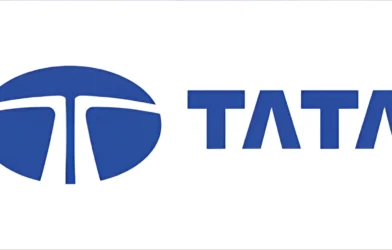Author: Dev Patel | EQMint | General News
Gold’s glitter is shining brighter than ever. The precious metal recently breached the $4,000 per ounce mark on October 9, marking a new milestone in its meteoric rise. Just a week later, prices soared further to $4,200/oz, confirming what many in the market already sensed — the world’s oldest safe-haven asset is in the midst of a powerful bull run.
According to a recent note by the World Gold Council (WGC), the current rally in gold prices — from trough to this new record — is just 735 days young, making it one of the fastest upward trajectories in modern gold history. The WGC highlighted that the $500 climb from $3,500 to $4,000 per ounce happened in a mere 36 days, the quickest such rise ever recorded.
“The pace of gold’s ascent is striking, with prices rising from $3,500/oz to $4,000/oz in just 36 days — far quicker than the historical average of 1,036 days taken to achieve similar $500/oz gains,” the council said in its note.
The Fastest Rally on Record
Historically, this metal bull runs have lasted longer before achieving comparable price jumps. Between August 1976 and January 1980, for instance, gold took 856 days to reach its peak. Later rallies were even longer: 1,162 days between December 2015 and August 2020, and 1,168 days between January 2007 and September 2011.
By comparison, the 2024–2025 run has been blisteringly fast — and that, according to analysts, is both a sign of strength and a caution flag for the near term.
What’s Driving the Surge
WGC attributes the current rally to a perfect storm of macroeconomic and geopolitical factors that have amplified gold’s appeal as a safe-haven asset.
The major catalysts include:
- Geopolitical Tensions: Rising instability in multiple regions has driven investors to seek safety in tangible assets.
- Dollar Weakness: The greenback’s decline has made gold more attractive for non-U.S. investors.
- Interest Rate Expectations: Hopes of further U.S. Federal Reserve rate cuts have fuelled speculative demand.
- Equity Market Risks: Fears of a potential correction in global stock markets have prompted asset reallocation toward gold.
Another major driver has been central bank buying. WGC noted that several emerging market central banks have been steadily adding gold to their reserves, reinforcing the metal’s long-term investment narrative and creating structural demand.
ETF Inflows Reinforce the Rally
Investor appetite for gold-backed instruments has also surged. Gold exchange-traded funds (ETFs) have seen robust inflows, adding $21 billion since the end of August, bringing the year-to-date total to $67 billion, WGC data shows.
Since 2003, there have been two major gold ETF “bull runs”:
- 2008–2013, lasting 221 weeks, adding 1,823 tonnes
- 2015–2020, lasting 253 weeks, adding 2,341 tonnes
The latest ETF upcycle, which began in May 2024, is only 74 weeks old. So far, holdings are up 788 tonnes, suggesting that this cycle still has significant room to run. “Compared to the averages of prior runs, this represents only 30%–40% of the total,” WGC said, hinting at potential for further gains.
Caution Flags Appear
While it’s momentum remains robust, analysts caution that the technical indicators are flashing red.
The Relative Strength Index (RSI) — a key measure of overbought or oversold conditions — is now above 90, and prices are more than 20% higher than their 200-day moving average.
These signals, WGC warned, suggest that the market may be overbought, increasing the likelihood of short-term profit-taking or a pullback.
“Tighter credit conditions could also trigger liquidation of high-performing assets like gold as investors search for cash,” the WGC report added. A resolution of geopolitical risks could further shift capital flows back to “risk-on” assets like equities.
Consumer Demand May Cool
Interestingly, the very strength of it’s rally might work against it in the near term. WGC believes that surging prices could dampen consumer demand, particularly during the otherwise strong festive and wedding seasons in Asia — key markets that traditionally drive physical gold buying.
“Sharp rallies often trigger portfolio rebalancing among strategic investors,” the council noted, suggesting that institutional investors may reduce allocations to lock in gains.
Long-Term Fundamentals Still Shine
Despite near-term risks, the long-term outlook for gold remains strong. The WGC expects a diversified investor base, macroeconomic uncertainty, and policy volatility to keep gold demand resilient over the coming years.
“Short-term volatility may arise from portfolio rebalancing, market corrections, and technical signals, while long-term resilience is underpinned by a broadening investor base, persistent policy uncertainty, and a gold investment market that still has room to grow,” the council said.
Market Voices: Correction Could Be a Buying Opportunity
Adding to the cautious optimism, Christopher Wood, Global Head of Equity Strategy at Jefferies, shared his perspective in his widely-followed GREED & Fear report.
“The near vertical ascent in both gold and gold mining stocks raises correction risks,” Wood wrote, adding that investors should view any sharp correction as an opportunity to accumulate rather than exit.
The Bottom Line
Gold’s rally to $4,200 per ounce may have been historic in speed, but the story isn’t over yet. While the metal could take a short-term breather amid overbought conditions and profit-taking, its strategic appeal as a hedge against uncertainty remains unshaken.
For investors, the message from WGC and global strategists is clear — short-term caution, long-term conviction.
Disclaimer: This article is based on information available from public sources. It has not been reported by EQMint journalists. EQMint has compiled and presented the content for informational purposes only and does not guarantee its accuracy or completeness. Readers are advised to verify details independently before relying on them.









